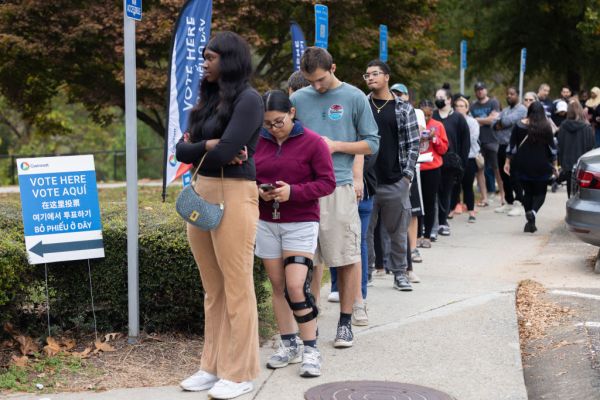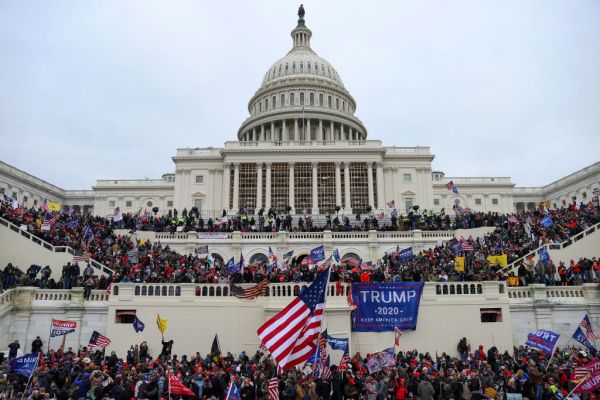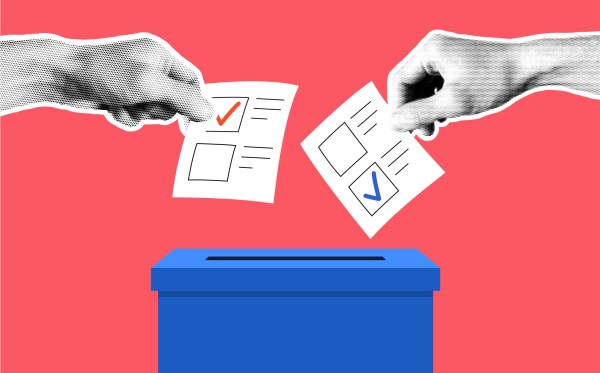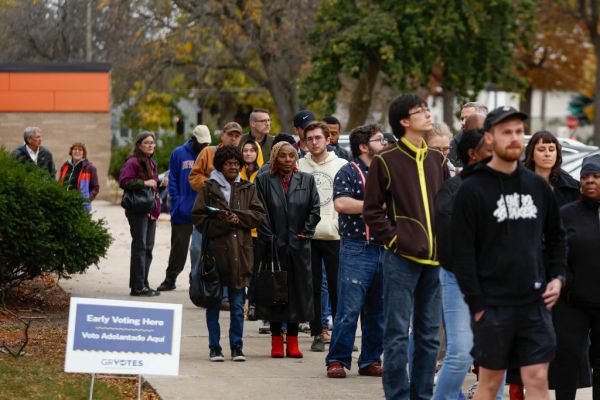The Russian military floated a new, retroactive justification for its military strategy in Ukraine on Friday, tacked onto the back of a standard-looking Defense Ministry briefing. This new “war aim” indicates that Russia is scaling back its ambitions. According to this briefing Russia had “surrounded” several Ukrainian cities and was considering taking them, but the “main thing” was “the complete liberation of Donbas” the Ukrainian region comprising the Donetsk and Luhansk provinces, areas that have been partially occupied by Russia since 2014. Russian forces had “surrounded” several cities across Ukraine not because they wanted to capture them, but in order to prevent Ukrainian reinforcements from reaching Donbas, where the “real” battle was, the briefer explained.
Here is what actually happened: After months of buildup and weeks of rhetorical escalation, Vladimir Putin gave a speech early in the morning of February 24 that launched his expanded war. He stated Russia’s purpose was: “to demilitarize and denazify Ukraine, as well as bring to trial those who perpetrated numerous bloody crimes against civilians, including against citizens of the Russian Federation.” In short, total regime change. Russia had formally recognized the so-called “separatist” regions of Ukraine as independent a few days earlier, and then clarified that Russia recognized the entirety of those provinces, not just the Russian-occupied areas, but Putin’s speech signaled a huge escalation. That morning Russian troops attacked on multiple fronts, in the south, north and northeast, and even directly toward Kyiv. The strike toward Kyiv looked like an attempt to take the Ukrainian state by surprise and kill or capture leading government figures. Presumably, they would have been used in some kind of Russian show trial after the war was over. According to Ukrainian President Zelensky, the Ukrainians have found dress uniforms among the Russian kits they have captured, indicating they expected a victory parade quite soon, with no time to have their fancy uniforms forwarded from their permanent bases inside Russia.
As the whole world now knows, Russia’s plan did not work. Its airborne thrust toward Kyiv was kicked in the teeth when the Ukrainians captured the Hostomel airfield and then consolidated their defenses along the deliberately flooded Irpin river, northwest of Kyiv. Russian thrusts toward Chernihiv and Kharkiv stopped outside the cities. Russia had more success in the south, rapidly capturing Kherson (a city close to Crimea) and making an attack toward nearby Mykolaiv, but even that offensive has spluttered and even reversed. The Ukrainians have recaptured some territory down south and are even starting to contest the city of Kherson, according to the Pentagon. There are reports that the Russian troops northwest of Kyiv are getting pushed back, and Ukraine might even be trying to encircle some of them.
Now, despite Putin’s statements about “demilitarizing” Ukraine and putting Ukrainian leaders “on trial,” the Russian military is trying to say that it really wanted to capture only Donbas all along. It may be a feint, but this is likely a sign that Russia really is reducing its war aims to something more achievable. However, this does not necessarily mean that the war will be over soon, or will become any less bloody or destructive. Putin may need some kind of face-saving victory to save his regime, one that includes Ukraine recognizing Russia’s seizure of Crimea, Ukraine ceding the rest of Donetsk and Luhansk, and possibly also a “land bridge” from Donetsk to Crimea—one that would cover at least the southern parts of the provinces of Zaporizhia and Kherson. Ukrainian morale is riding high from the unexpected battlefield successes, and even if President Zelensky decided that some kind of territorial concessions to Russia were needed, it would be incredibly difficult to convince the Ukrainian people. In fact, this might be a second-stage Russian plan: Force the government to make concessions as a way of engineering the collapse of that government by mobs of angry Ukrainians.
If Putin is going to get concessions from Ukraine, even just a recognition of the gains Russia already made by 2015, he is probably going to need to either make the Ukrainian people desperate for some kind of resolution and/or to make things so bad for Ukraine that the Ukrainian government decides the risks of continuing outweigh the risks of making concessions. Getting Ukraine to either of these points will involve inflicting much more misery on the Ukrainian people and continuing pressure on the Ukrainian military. This could involve the systematic reduction of the cities of Chernigiv, Sumy, and Kharkiv by artillery fire, like what Russian forces have already accomplished in Mariupol. It could involve more indiscriminate bombing of Ukrainian cities from the air (if they ever manage to take out Ukrainian air defenses) and the deliberate targeting of power plants, sewage treatment plants, pumping stations, etc. by cruise missiles or sabotage teams—the kinds of attacks that would inflict misery on the Ukrainian population.
Russian forces have shown that they cannot compete with Ukrainian ones when it comes to morale or possibly even battlefield skill, so instead they will compete in inflicting cruelty and in attrition. When Ukrainian troops refused to surrender and kept fighting fiercely during the Russian siege of Mariupol, Russian forces targeted non-combatants and started wrecking the city—most famously by attacking a maternity and children’s hospital and a theater full of women and children with the words “CHILDREN” next to it, written clearly so Russian aircraft and satellites could see it. Russia could be switching to these kinds of tactics on a national scale.
If Putin is actually limiting his war aims and Russia is now aiming for a more realistic, longer, bloodier war, it does not mean that Putin’s war aims will remain limited. There are other surprises still in store as the war drags on. There might be a sudden catastrophic collapse of Ukrainians’ logistics train (possibly quickened by Russian attacks on critical infrastructure) or there could be a collapse of the Ukrainian government because of other events. Just because Putin may have given up the dream of rapid regime change does not mean Russian spies and thugs will stop trying to kill Zelensky, and if they ever succeed Putin might be tempted to try to destroy the Ukrainian government again. The Russian military might get its act together and pull off a major victory in eastern Ukraine, capturing thousands of Ukrainian troops and seizing more territory. One scenario for how this ends might be a Cold War-style “north” and “south” Ukraine, as a Ukrainian intelligence chief put it. Russia could slowly capture everything east of the Dnipro river south of Dnepropetrovsk, call it the “real” Ukrainian government, and then just initiate a diplomatic silence and non-recognition toward the rest of Ukraine (while continuing subversive warfare and waiting for a future opportunity to strike). This would be reminiscent of what Russia tried to do with its “Novorossiya” project back in 2014.
We may be looking at a classic example of the war-termination problem. To massively oversimplify this idea: When a state is losing on the battlefield it will fight because it wants to reverse the enemy’s momentum and improve its negotiating position, but then when it manages to start winning, then it is on a roll and can’t stop. Until Putin is convinced that peace is in his interests, he won’t stop fighting. No matter what Putin says or how well or poorly Russian troops are doing, unless Putin says, “I’m leaving Ukraine” and his troops actually pack up and leave, the West should continue to inflict punishing sanctions and give the Ukrainians weapons, fuel, and other support. If Putin is going to wage a war of attrition, he should know that he will be doing so against the resources of the Western alliance.
Andrew Fink received his Ph.D. from the law school at Leiden University in 2020 on the history of propaganda, conspiracy theories, and violent extremist ideologies.







Please note that we at The Dispatch hold ourselves, our work, and our commenters to a higher standard than other places on the internet. We welcome comments that foster genuine debate or discussion—including comments critical of us or our work—but responses that include ad hominem attacks on fellow Dispatch members or are intended to stoke fear and anger may be moderated.
You are currently using a limited time guest pass and do not have access to commenting. Consider subscribing to join the conversation.
With your membership, you only have the ability to comment on The Morning Dispatch articles. Consider upgrading to join the conversation everywhere.